Are you looking to secure funding for your groundbreaking IT project? Crafting a compelling grant proposal is essential, and a well-structured letter can make all the difference. In this article, we'll explore the key elements of a successful IT innovation grant proposal letter, ensuring you capture the attention of reviewers and convey your vision effectively. So, let's dive in and discover how to elevate your proposal to the next level!
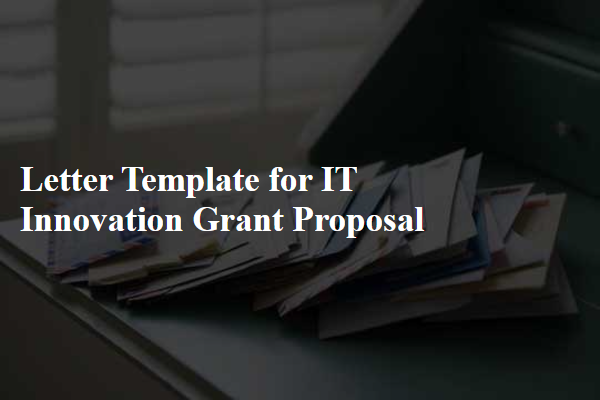
Project Title and Overview
Innovative digital transformation initiatives empower organizations to enhance operational efficiency and customer engagement. Advanced technologies such as artificial intelligence (AI), cloud computing, and blockchain are pivotal in reshaping business landscapes. For instance, a cloud-based solution from a provider like Amazon Web Services (AWS) can streamline data storage and accessibility, while AI algorithms provide insights for strategic decision-making. Case studies from companies like Netflix illustrate the significance of leveraging innovative technologies to foster growth, demonstrating integration of machine learning for personalized content recommendations. This project aims to implement a comprehensive IT innovation strategy in a mid-sized enterprise, enhancing productivity by 30% over 12 months while reducing operational costs by 20%. With an estimated budget of $250,000, the funding will support software development, staff training, and infrastructure upgrades, ensuring the project successfully realizes its objectives and drives sustained growth.
Innovation Objectives and Goals
The innovation objectives in the IT sector aim to enhance operational efficiencies and drive digital transformation. Emphasis on cloud computing (e.g., Amazon Web Services, Microsoft Azure) enables organizations to achieve scalable solutions, reducing infrastructure costs by approximately 30% annually. Implementing artificial intelligence (AI) algorithms, such as machine learning models, can automate mundane tasks, improving productivity by 40% across various departments. Enhancing cybersecurity protocols (including encryption standards like AES-256) protects sensitive data from breaches, which can cost businesses up to $3.86 million per incident. The goal is to develop a prototype by Q2 2024, validate through user testing, and deploy the final solution in targeted sectors, including healthcare, finance, and education, by Q4 2025. Notable milestones include securing partnerships with tech companies and achieving compliance with GDPR and HIPAA regulations for data protection.
Detailed Budget and Funding Requirements
The detailed budget for the IT innovation grant proposal includes key areas such as personnel costs, equipment purchases, and operational expenses. Personnel costs, which encompass salaries for the project team members with expertise in software development, cybersecurity, and data analytics, are projected at $150,000 annually for a duration of two years. Equipment purchases involve high-performance servers and advanced software licenses, totaling approximately $50,000. Operational expenses, including utilities and office supplies for efficient project execution, are estimated at $20,000. Grant funding requirements also cover professional services such as consulting, which is forecasted at $30,000. Additionally, contingency funds representing 10% of the total budget are included to accommodate unforeseen expenses, rounding the total estimated budget to $300,000. This comprehensive approach ensures that all aspects of the project are sufficiently funded to achieve the desired innovative outcomes.
Technical Approach and Methodology
The technical approach and methodology for the IT innovation grant proposal focuses on developing a robust software solution that leverages artificial intelligence (AI) and machine learning (ML) algorithms to optimize data processing. The project will implement an advanced data analytics platform, utilizing cloud computing infrastructure, such as Amazon Web Services (AWS), ensuring scalability and reliability. The initial phase (estimated duration of six months) involves collecting datasets from various sources, including public databases (e.g., Kaggle) and proprietary systems, to ensure comprehensive training for the AI models. Subsequent phases will include iterative development cycles based on Agile methodologies, allowing for continuous testing and integration of features. User feedback from stakeholders, including industry experts and end-users, will inform further refinements to enhance usability and performance metrics, ensuring alignment with market needs. Performance benchmarks will be established against industry standards (e.g., processing speed, accuracy rates) during validation tests, providing measurable outcomes to demonstrate the project's impact and efficacy.
Expected Outcomes and Impact Analysis
An effective IT innovation grant proposal should outline the anticipated outcomes related to project implementation in educational institutions, community organizations, or corporate settings. Primary outcomes may include increased efficiency in data processing, enhanced user experience through software updates, or substantial improvements in cybersecurity measures. Metrics for success might involve quantifiable increases in user engagement percentages (aiming for at least 25% improvement), reduction in IT support requests (targeting a 30% decrease), or improved system uptime (striving for over 99.5% availability). The impact of these innovations could extend beyond immediate organizational benefits, fostering an environment of continuous improvement and attracting more skilled professionals to the field. Long-term societal implications may include increased digital literacy rates, highlighting a significant rise in job opportunities within the tech industry, or contributing to sustainable practices through optimized resource utilization.
Letter Template For It Innovation Grant Proposal Samples
Letter template of IT innovation grant proposal for non-profit organizations.
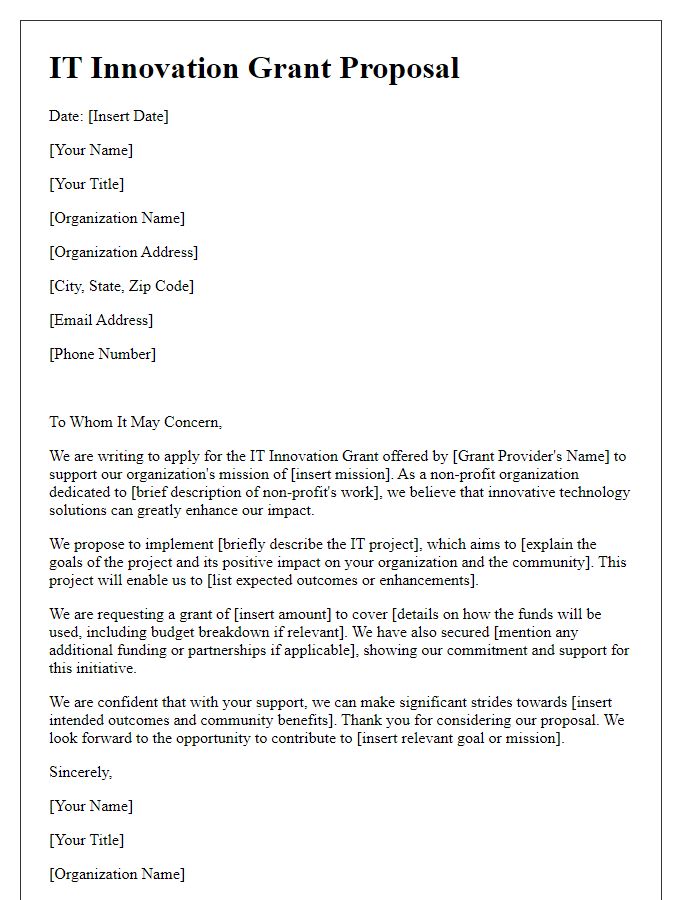
Letter template of IT innovation grant proposal for educational institutions.
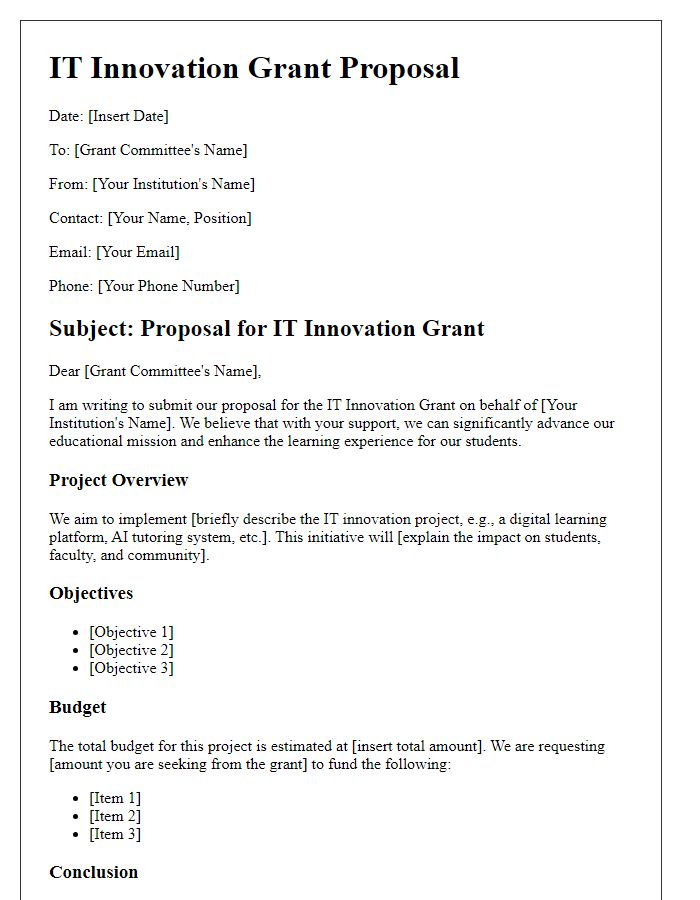
Letter template of IT innovation grant proposal for government projects.
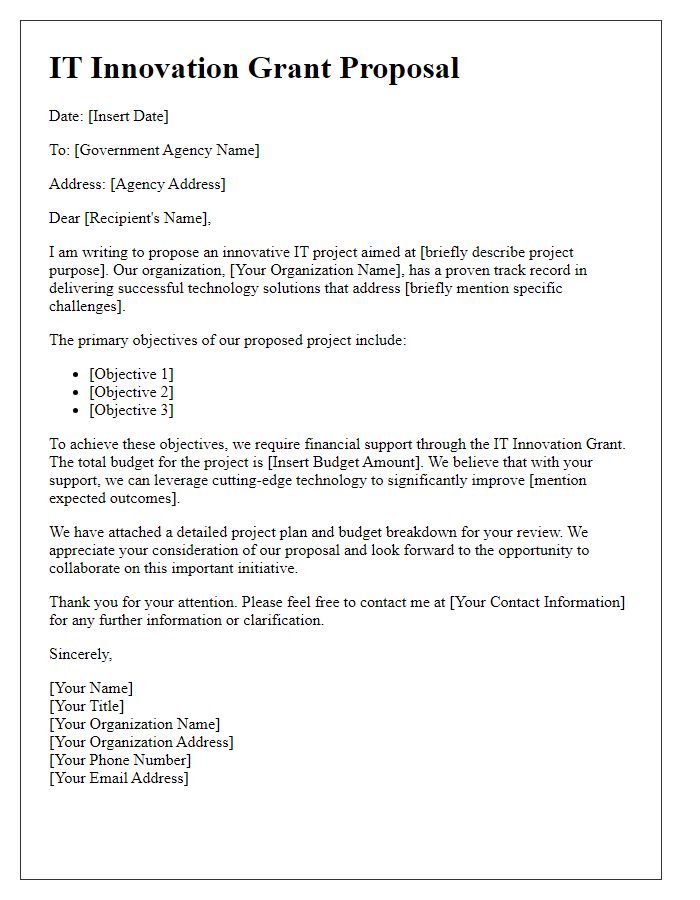
Letter template of IT innovation grant proposal for research and development.
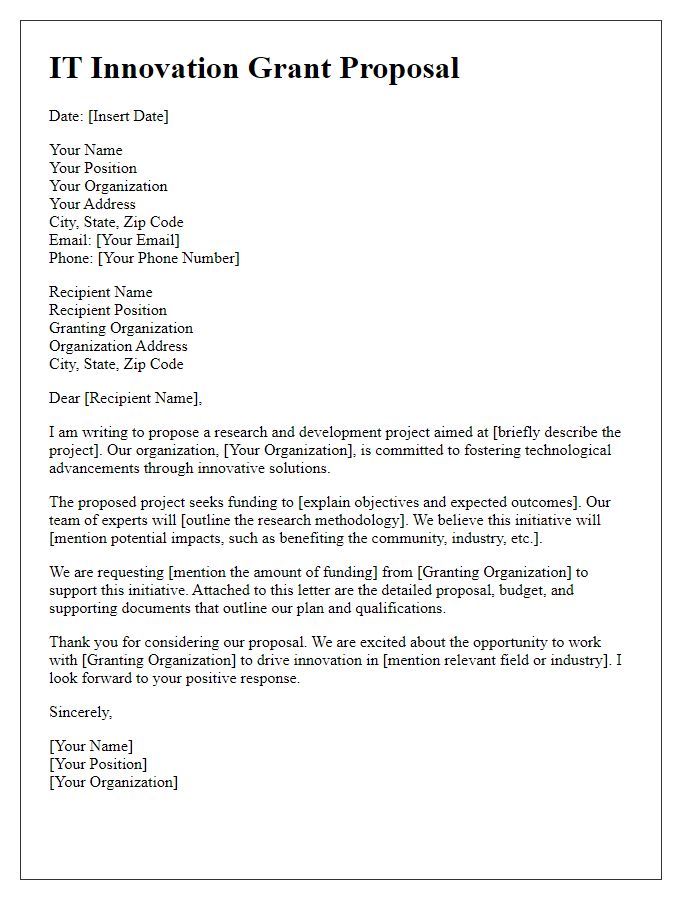
Letter template of IT innovation grant proposal for community-focused initiatives.
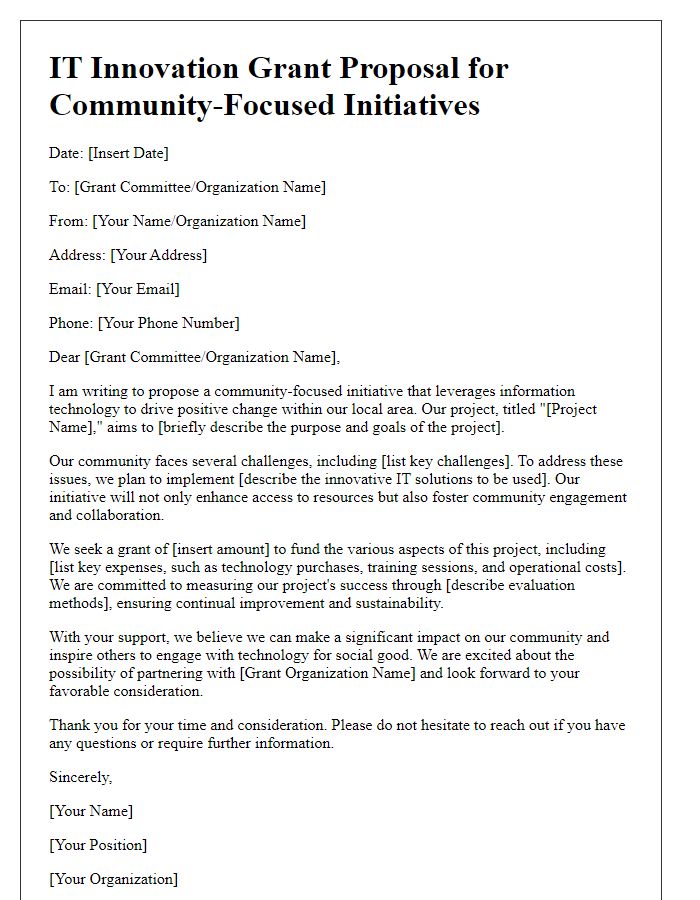
Letter template of IT innovation grant proposal for environmental technology solutions.
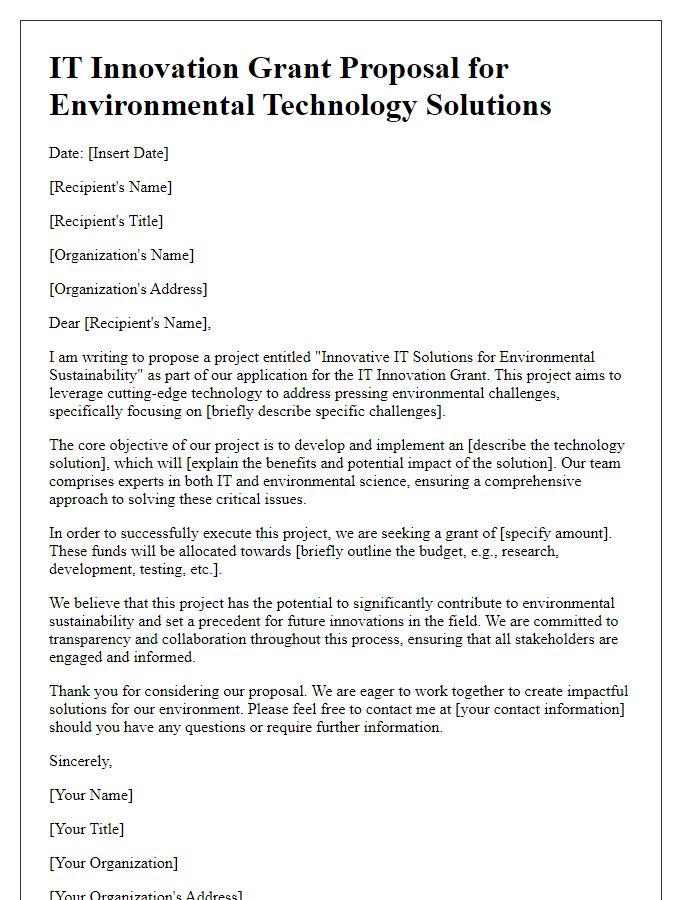
Letter template of IT innovation grant proposal for healthcare technology advancements.
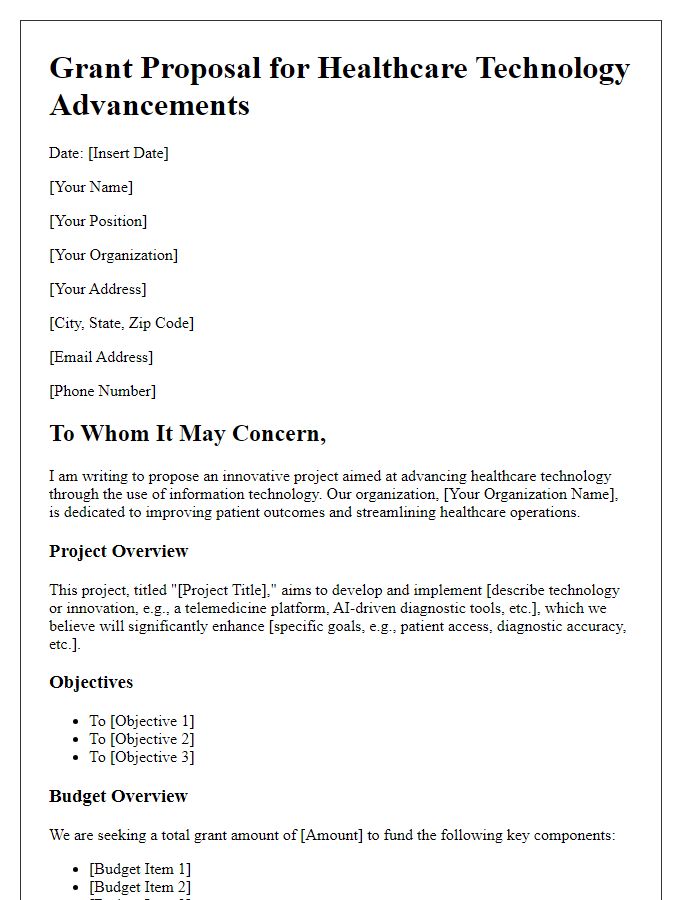

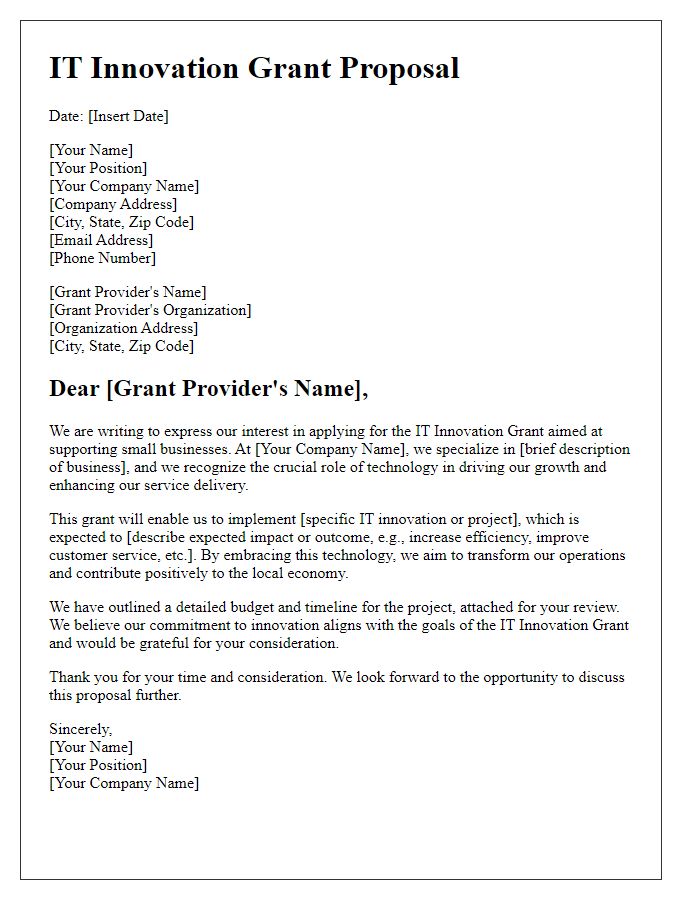
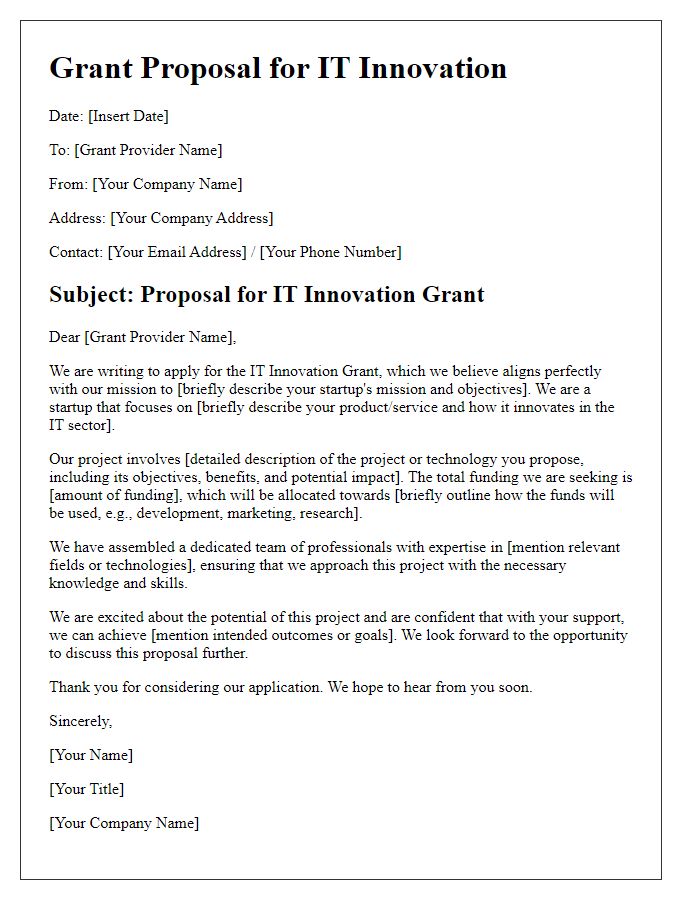
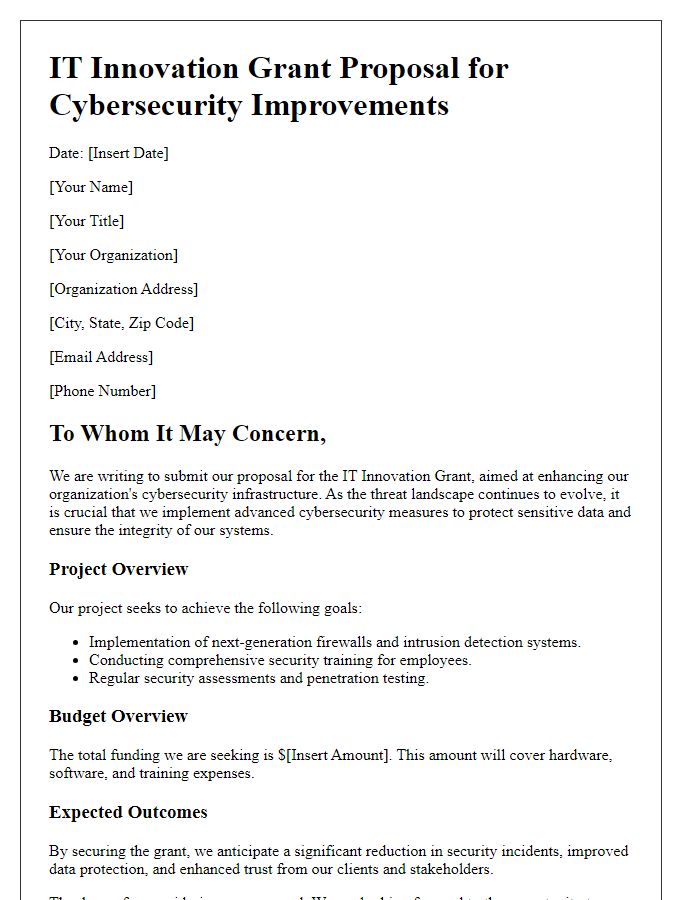

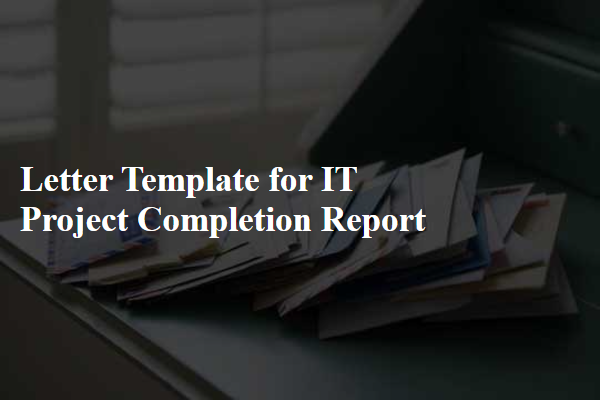
Comments